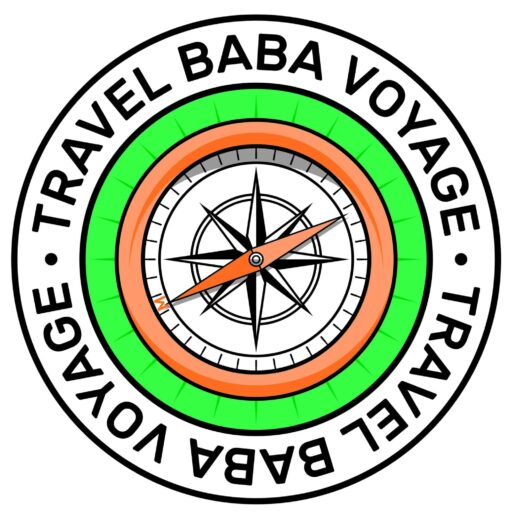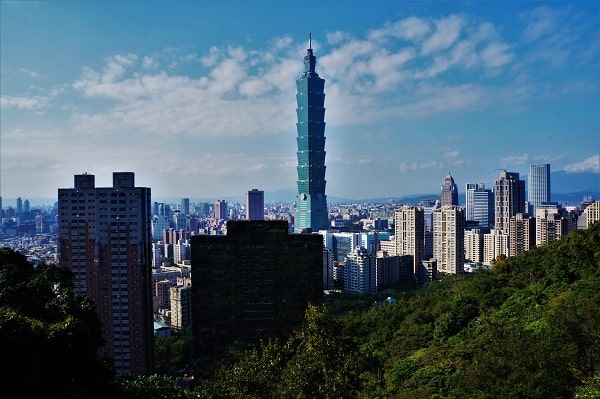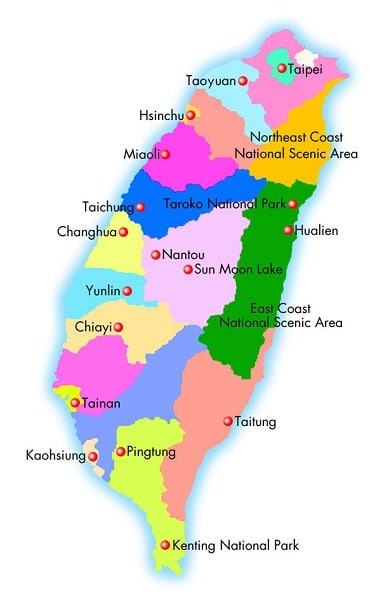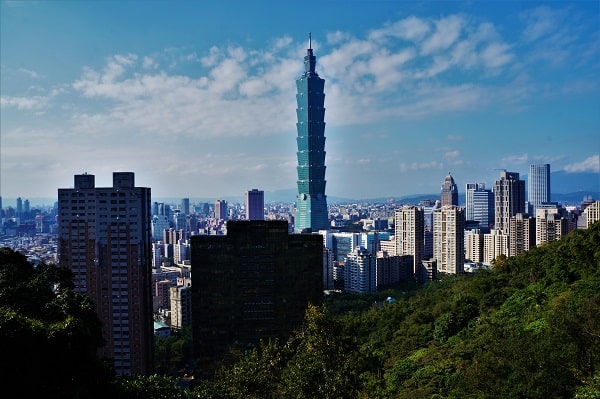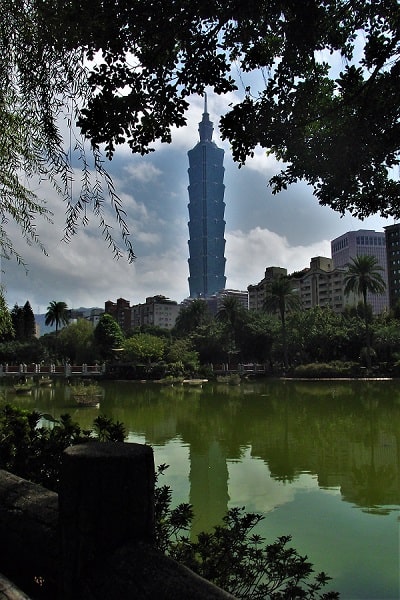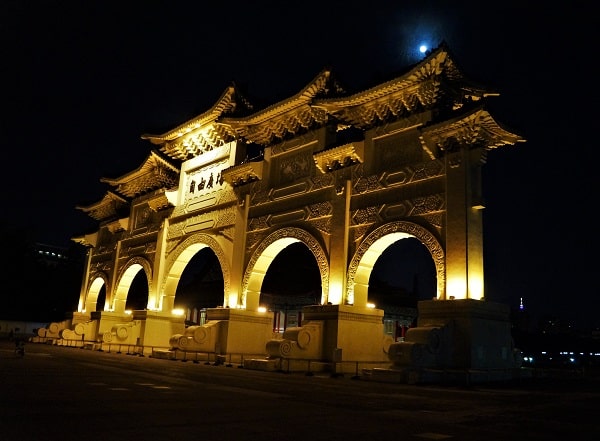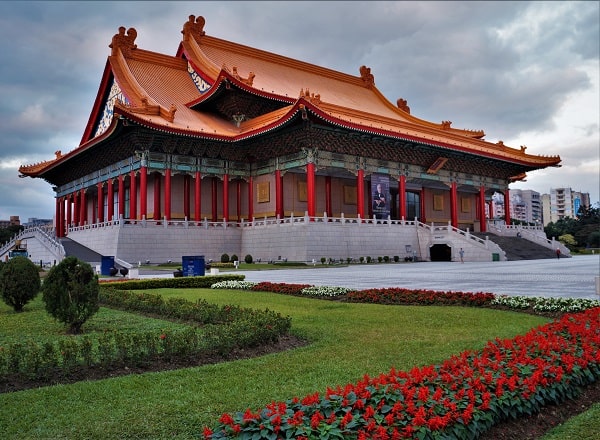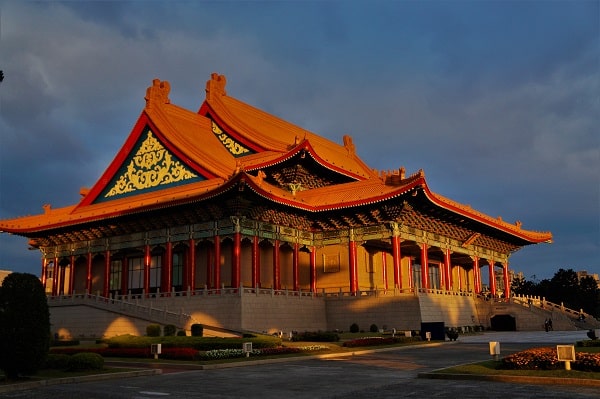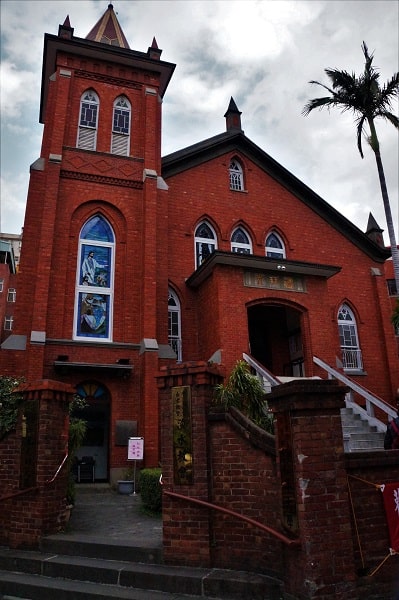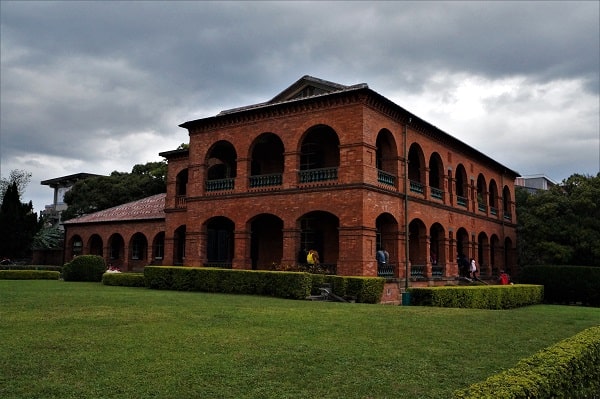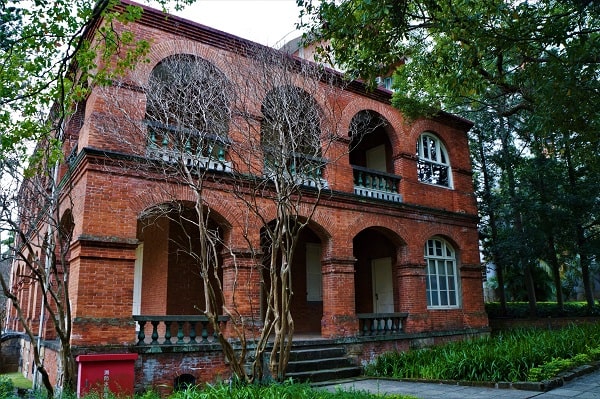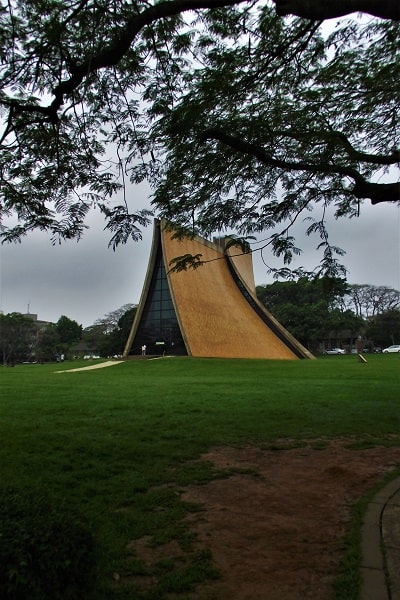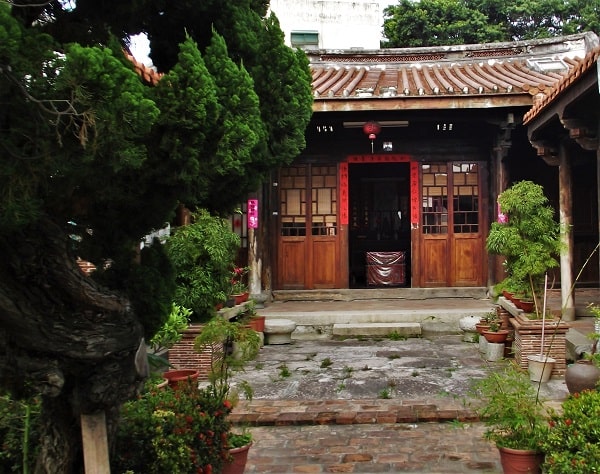When people talk about Taiwan, the first thing that comes to mind is “made in Taiwan.” This little-known country is often confused with Thailand. In any case, Taiwan is never thought of as a travel destination. Wrong!!!
What’s more, Taiwan offers many alternatives to mass tourism and allows for a better way to travel.
The History of Taiwan: A small country between two empires
Taiwan appeared quite recently on the world’s political maps, but the island has been inhabited since prehistoric times.
From Prehistory to the 15th Century
Before it was an island
Taiwan hasn’t always been an island. In fact, at the end of the Pleistocene, the sea level was about 140m lower than today. The Taiwan Strait is shallow. The drop in sea level created a land bridge between the island and the continent. Continental fauna could therefore cross and develop on the island.
The oldest evidence of human presence on the island was found in the south of the island at Chouqu and Gangzilin, in the Zuojhen district, Tainan. It consists of three fragments of cranial bone and a molar. These artifacts have been dated to between 20,000 and 30,000 years old.
The oldest objects found on the island are chipped pebble tools from a Paleolithic culture found in four caves in Changbin, Taitung, dated from 15,000 to 5,000 years ago, and similar to contemporary sites in Fujian. The same culture is found at the Eluanbi sites at the southern tip of Taiwan, persisting until 5,000 years ago.
Taiwan becomes an island
10,000 years ago, at the beginning of the Holocene, the sea level rose, creating the Taiwan Strait and giving it the island appearance we know today.
The only Paleolithic burial found in Taiwan was in the Xiaoma cave in the southeast of the island, dating to around 4000 BC, of a male similar in type to Negritos found in the Philippines. There are also references in Chinese texts and Taiwanese aboriginal oral traditions to pygmies on the island at some point in the past.
But the island was not isolated for all that. In fact, the island of Taiwan is located in the center of a chain of islands that runs from Japan to Indonesia. Very early on, there were exchanges between the peoples of these different islands.
The Dapenkeng Culture
Around 3000 BC, the Neolithic Dapenkeng culture appeared abruptly and spread rapidly along the island’s coast. Their sites are characterized by corded pottery, polished stone adzes, and slate points. The inhabitants cultivated rice and millet, but also relied heavily on shellfish and marine fish.
Historians believe that this culture is not derived from the Changbin culture, a local indigenous culture in Taiwan. They believe it was brought by the ancestors of the Taiwanese aborigines. They brought with them the first Austronesian languages. From Taiwan, groups are believed to have migrated to the islands of Southeast Asia, the Pacific Ocean, and the Indian Ocean.
To support this thesis, one can note that the Malayo-Polynesian languages now spoken in a vast region from Madagascar to Hawaii, Easter Island, and New Zealand, form only a single branch of the Austronesian family, the rest of whose branches are found only in Taiwan.
The Dapenkeng culture was succeeded by a variety of cultures across the island, including the Tahu and Yingpu cultures. Iron appeared at the beginning of the current era in cultures such as the Niaosung culture. The first metal artifacts were trade goods, but around 400 AD, wrought iron was produced locally using bloomeries, a type of small smelter, a technology that may have been introduced from the Philippines.
The first Chinese writings on Taiwan
However, Taiwan remained outside the global historical narrative. Only a few Chinese stories refer to visits to islands that some historians identify as Taiwan.
- In the 3rd century, soldiers from the state of Wu recorded a visit to an island they called Yizhou.
- In the 7th century, Emperor Yang of the Sui Dynasty sent 3 expeditions to an island called Liuqiu. Some historians believe this is a reference to the island of Okinawa, others to Taiwan.
From the 16th to 17th Century: Taiwan becomes a coveted prize
The first to make a definite reference to Taiwan were Portuguese sailors. In 1544, they noted in their logbook the island of Formosa, “beautiful island” in Portuguese.
In 1582, Portuguese sailors were shipwrecked on Taiwan and stayed there for ten weeks before returning to Macau.
Throughout the 16th century, a growing number of Chinese fishermen, merchants, and pirates visited the southwestern part of the island. In 1623, about 1,500 Chinese visitors and residents were counted.
The Dutch and Spanish Colonization
The Dutch East India Company needed a commercial and military base in this region of the world. Since they lost to the Portuguese in Macau in 1622, the Dutch tried to occupy Penghu, an archipelago west of Taiwan. They were driven out by the Ming. They eventually settled on the southwestern coast of Taiwan.
The Dutch presence was not to the liking of the Spanish Empire, which saw it as a threat to its colony in the Philippines. That is why in 1626, the Spanish established a colony in the northeast of Taiwan (near Keelung), building the San Salvador fort.
In 1629, they also built the San Domingue fort in Tamsui. Faced with hostility from the local population, they abandoned it in 1638.
Taiwan, a Dutch Colony
The Dutch decided to transform Taiwan into a Dutch colony. To do this, they led a campaign to punish the local populations who had violently opposed the Dutch and to unite the aborigines in their allegiance. Many aborigines died in these campaigns, and women and children became slaves to the occupier.
In 1642, the Dutch succeeded in expelling the Spanish from the North of the island. To take possession of the western plains, Pieter Boon launched a destructive military campaign that allowed for total control of the island in 1645.
This domination was short-lived because on May 17, 1661, the Dutch acknowledged their defeat against the Chinese and left the island.
Before leaving, they established a tax system, schools to teach the romanized writing of aboriginal languages, and evangelized Christianity. This system was kept by all subsequent occupiers of Taiwan.
From the Dutch era, there were waves of migration. The first influx of migrants were the Hakkas and Hokkiens. They came either to obtain hunting permits or to flee the Qing Empire. They were discouraged from staying on the island.
The Kingdom of Tungning
On the continent, the Ming Empire was at war with the Manchu Qing. It was in this context that General Koxinga (Ming) undertook to conquer Taiwan and expel the Dutch. After a nine-month siege, Koxinga captured the Dutch fortress Zeelandia. The aborigines allied with the Dutch sided with the Chinese and hunted down and executed the Dutch still present on the territory. Koxinga did not reign for long on the island as he died just 4 months after his victory. This death is a subject of controversy. He either died from a fit of madness or from malaria.
Zheng Jing, Koxinga’s son, took power. Faced with unrest on the continent, Zheng undertook an emigration policy promising free crops and property to Chinese from the continental coast who would come to Taiwan. The only counterpart was to participate in military service in the event of a Qing attack.
The Qing Rule
In 1683, Admiral Shi Lang convinced Zheng Keshuang, Koxinga’s grandson, to surrender to the Qing dynasty. The Qing were moderately interested in the island. They even described it as “a ball of mud beyond the bounds of civilization.”
They made the island a prefecture in 1683 and divided it into two in 1875. In 1887, it became the distinct province of Fokien-Taiwan.
Until around 1760, the government limited immigration to Taiwan. There was a relaxation between 1760 and 1811. A new population settled on the island and brought with it conflicts present on the continent. Rival clans or inhabitants from different continental regions often attacked each other. This led the government to say that Taiwan was uncontrollable.
A growing interest in Taiwan
It was the various colonization attempts by the British and French that renewed the emperor’s interest in the island.
Due to these incursions, the Qing government began to build a series of coastal defenses and in 1885, work began to make Taiwan a province, with Liu Mingchuan as the first governor. He divided Taiwan into eleven counties and tried to improve relations with the aborigines. He also developed a railway from Taipei to Hsinchu, established a mine in Keelung, and built an arsenal to improve Taiwan’s defensive capability against foreigners.
In 1871, an incident between aborigines and crew members of a Ryukyuan ship (a Japanese possession), Japan showed a growing interest in Taiwan.
They started with an expedition to the village of Mutan in 1874. They left after receiving a large indemnity from the Qing.
The latter rethought their migration policy on the island to assert their power. Before the first Sino-Japanese war, Han Chinese represented 92% of Taiwan’s inhabitants.
Despite everything, the Qing would abandon Taiwan to the Japanese after their defeat against the Empire of the Rising Sun. The Treaty of Shimonoseki, signed on April 17, 1895, gave sovereignty over Taiwan and Penghu to Japan.
The humiliation of the loss of Taiwan and the conditions of the treaty’s signing would be the basic elements for Chinese nationalists.
Taiwan under Japanese rule
Japan’s ambition to dominate Taiwan was not new in the 20th century. Indeed, as early as 1592, Japan undertook a policy of expansion to extend its influence south and west. For 3 centuries, the aborigines repelled Japanese invasions. Other attempts would be a failure, in 1609 and 1616.
Japan would therefore become the master of Taiwan in 1895. It would remain so until its defeat during the Second World War.
Declaration of the Republic of Formosa
Upon the announcement of Taiwan’s cession to Japan, Taiwanese notables decided to declare their independence and the formation of the Republic of Formosa. Their idea was to force foreign powers to help them against Japan as an independent state. This Republic only lived for a short time. On one hand because there were pro-Chinese forces in Taiwan who plundered the island. Japan launched a military expedition to take possession of the island. Japanese troops landed in Keelung on May 29, 1895. Upon this announcement, the president of the Republic and his main general left the island. The resistance became disorganized. The capture of Tainan on October 21, 1895, marked the end of the Republic of Formosa. It should be noted that this would be the only time in its history that Taiwan was officially independent.
The Japanese Colonization
The Japanese colonization of the island took place in three stages. It began with an oppressive period of repression and paternalistic rule. The second stage was a dōka period aimed at treating all peoples (races) in the same way. The Second World War, a period of kōminka, was a policy that aimed to make the Taiwanese loyal subjects of the Japanese emperor.
The Modernization of Taiwan
Unlike China, which had long neglected Taiwan’s development, the Japanese would make the island an integral part of their territory.
From 1899, Japan created the Bank of Taiwan to encourage the Japanese private sector to invest on the island.
The construction of Taiwan’s railway system was launched in 1900. Electricity arrived on the island in 1905. The same year, the territory became financially autonomous and no longer needed subsidies from the central government. The island would even be considered the second most developed region in East Asia.
The health system allowed for the virtual eradication of infectious diseases and life expectancy was 60 years in 1945.
The Second World War and the Departure of the Japanese
To ensure the war effort, Japan pushed Taiwan’s industrial capacity to its maximum. In return, the island was bombed.
To ensure China’s rallying to the Allied forces, it was promised that in case of victory, Taiwan would become Chinese again.
That is why, at the end of the war, Japan abandoned Taiwan even though no treaty was signed for this retrocession.
The Republic of China
National unity regained
When the Japanese army left Taiwan, the Republic of China sent its troops to ensure the security of the island. Taiwan became a province of China again. The provincial government was established in September 1945. October 25, 1945, was made Taiwan Retrocession Day.
This retrocession posed the problem of the Japanese living in Taiwan. In 1938, there were 309,000 of them. After the Second World War, China repatriated 90% of the Japanese.
The new continental and nationalist government was very repressive and made excessive use of violence. Tensions rose until the events of February 1947.
The February 28, 1947 Massacre: The beginning of the White Terror and Martial Law
Since Taiwan became a Chinese province again, it was governed by mainlanders who knew nothing of the island’s unique characteristics.
In addition, they were corrupt, exerting pressure to obtain favors or arbitrarily requisitioning property. Resentment grew in the country. In response, the government sent the police who had complete freedom to repress the recalcitrants.
The culmination came on February 28, 1947, in the Dadaocheng district of Taipei. Agents from the tobacco monopoly bureau confiscated cigarettes from a 40-year-old widow. When she intervened, she was hit in the face with a rifle butt. The people around protested. Faced with the rebellion, one of the agents shot into the crowd, killing a passerby. The agents managed to get to the nearest police station. It would be surrounded.
The next day, protesters went to the national radio station and called on the people to revolt. Demonstrations were recorded throughout the island. In response, the government declared martial law (which would not be lifted until 1987) and called in the army as reinforcement. A very harsh repression took hold. The toll would be between 5,000 and 28,000 dead or missing. Until recently, February 28, 1947, was a taboo subject in Taiwan.
The Government-in-Exile of the Republic of China
After the Second World War, a civil war broke out between nationalists and communists. In 1949, Mao Zedong’s troops seized power on the mainland.
Chiang Kai-shek decided to transfer the government of the Republic of China to Taipei. His idea was to retreat in order to better prepare for a counter-attack.
At first, he would hold China’s seat at the UN. But in 1971, the world recognized Mao as the leader of mainland China. Chiang Kai-shek was given the possibility to declare Taiwan’s independence and gain official recognition. He refused under the “one China” ideology. This ideology is still present in the Chinese Communist Party today.
He decided to make major reforms such as land reform. This allowed Taiwan to develop and become one of the 4 Asian Dragons in the 90s. At the same time, he led a repressive policy. No freedom of the press, no freedom of assembly, and no dissent possible. At his death, his son, Chiang Ching-kuo, took over.
Towards Democracy
From the mid-80s, he loosened his grip on Taiwanese society. Advised by Lee Teng-hui, he began reforms to bring democracy to Taiwan. The person who would make Taiwan a modern and democratic state is Lee Teng-hui. He is nicknamed “Mr. Democracy.” He would lead significant structural reforms until he transformed Taiwan’s authoritarian regime into a parliamentary democracy. In 1996, he would become Taiwan’s first democratically elected president.
Relationship with China
After the election of Chen Shui-bian, a pro-independence supporter, in 2000, China began to show signs of dissatisfaction. A war was narrowly avoided thanks to the establishment of a status quo. As long as Taiwan does not declare its independence, China will not threaten the integrity of Taiwanese territory.
This status quo is very fragile and China has violated it several times.
Currently, Taiwan is still officially a Chinese province even though it has all the attributes of an independent country.
Tourism in Taiwan
Taiwan is a little-known country. Despite a diverse and extensive tourism offering, few people visit this country. Here are some tips to make you want to travel to Taiwan.
5 things not to do in Taiwan
-
Shout or get angry
The Taiwanese people are very kind and polite. Shouting or getting angry is one of the things that is not acceptable in interactions between people. You will get nothing with this attitude. Worse, you will complicate the situation. Stay calm and you’ll see that everything will be done to find a solution to your problem.
-
Bargain for prices
In Taiwan, prices are fixed. If you start to bargain, your counterparts may not appreciate it and will close themselves off to any conversation. If the price doesn’t suit you, you can go to other shops to see if the price is lower.
-
Not respecting queues
You’ll see that in Taiwan, queues are very organized. Everyone waits their turn. If you don’t respect them, you will be called out. By respecting the queues, everything goes much faster. Try it and you’ll see.
-
Talking politics
This advice is valid in many places. But in Taiwan, there is always a division in society regarding relations with China. If you talk politics, without knowing your interlocutor, you risk getting into endless conversations that can escalate.
-
Not wearing a mask if you’re sick
Sneezing in public without a mask is a sign of bad manners and deep disrespect. In Taiwan, people think of others and not contaminating other people is very important. So if you’re sick, buy a mask and wear it.
When to come to Taiwan?
Taiwan benefits from a temperate climate that allows for a quite significant tourist season. We can divide the year into 3 periods.
Summer: the best time to come to Taiwan
From April to October, the temperatures are mild and it rains very little. This is the best period to visit the island (with the exception of August). This way you can enjoy the beaches in the south of the island in a warm climate.
Winter: other activities are possible
The period from November to March can be called the winter period. Winter in Taiwan isn’t very cold, but it rains often. Not heavy rain, but it’s still present. It is entirely possible to visit Taiwan during this period. It doesn’t rain all day, every day.
The typhoon season
The month of August is the typhoon month. This is the only time of the year when it’s better not to go to the island. In case of a typhoon, everything is closed and travel is limited or even prohibited. You have 11 months left to visit Taiwan.
What to visit in Taiwan?
Taiwan offers a huge number of visiting possibilities. Whatever you like, you’ll find it in Taiwan.
Taipei: Taiwan’s capital between modernity and traditions.
Taiwan’s capital is in the image of the country. It lives between modernity and traditions. In a few subway stops, you can go from the 18th to the 21st century.
-
Taipei 101: symbol of the capital
Taipei 101 is the symbol of the city. At its inauguration in 2004, it was the tallest building in the world. It is still currently the fourth tallest building in the world. It is possible to see the city panoramically from its summit. To do this, you must take the fastest elevator in the world. It is the symbol of the city’s modernity.
-
Chiang Kai-shek Memorial Hall
The Chiang Kai-shek memorial stands in the center of Taipei. It is surrounded by gardens and the National Theater and Opera House. An ideal place to relax and discover Chinese architecture. There are often exhibitions in the memorial.
-
Sun Yat Sen Memorial Hall
Sun Yat Sen is the only man who is respected in both Taiwan and China. Father of the Republic of China, he is the symbol of the struggle against the empire. There is a beautiful Chinese-style garden and it’s one of the best places to photograph the 101.
-
The Longshan Temple
It is one of the oldest temples on the island. It was built in 1738 although it underwent renovations at the beginning of the 20th century and after the bombings of the Second World War. Initially it was a Buddhist temple but now it also houses Taoist deities. This is the traditional tolerance of Chinese culture. It is a very important and very lively place of worship.
-
The 228 Peace Park
This old park built during the Japanese period took its name from the tragic event we located earlier. It is now a place of commemoration but also a place of culture with the National Taiwan Museum. There are beautiful pagodas surrounded by fountains.
-
Ximen
It is the youth district par excellence. In these pedestrian streets, there are many clothing, shoe, and music stores. Something is always happening in Ximen.
-
The Xingdian Temple
This temple is quite recent (1967). It was built in the pure tradition of Chinese architecture. In addition, across the street, there are plenty of massage parlors to relax. A place to visit at dusk.
There are many other places to visit in Taipei. Don’t hesitate to contact me to find out more.
Wulai
Wulai is a small village south of Taipei. On weekends it is invaded by people from Taiwan’s capital who enjoy the mountains. You can taste the local specialty: rice cooked in bamboo, admire a waterfall, take a small train and finally relax in the hot springs.
Tamsui
North of Taipei, this village has very beautiful monuments from the Dutch period as well as a fort. A place accessible by metro that you can visit for a day.
Hualien
A city located on the east coast, it is the starting point for visiting Taroko National Park. Surely the most beautiful national park on the island. In addition, you can admire dolphins, whales, and sharks on whale watching cruises.
Taichung
It is an industrial city without much interest. It is, however, the starting point for accessing Sun Moon Lake and other hikes in nature.
Alishan National Park
It is the highest mountain in Taiwan with a summit at 2663 meters. The ideal place for hikers and nature lovers.
Tainan/ Kaohsiung
Southern Taiwan is the place for beach and swimming lovers. You also have the possibility to go diving.
My suggested itineraries
Here are some itinerary ideas that you can do during your trip to Taiwan. They are given as an indication and each trip depends on your tastes and desires.
If you need help to organize your stay and prepare your amazing trip in Taiwan, you can check my services
For a one-week stay in Taiwan
Si You only have a week to discover Taiwan, so it's best to stay in the north..
Itinerary
Day 1: Taipei, visit to the Sun Yat Sen Memorial Hall, Taipei 101 and the business district.... Day 2: Taipei, visit 228 Park, the Presidential Palace, the city's east gate, and the Chiang Kai-shek Memorial Hall. Day 3: Taipei, visit Longshan Temple and Ximen. Day 4: Tamsui, visit the city's main monuments, relax on a terrace overlooking the river. Day 5: Wulai, visit the village, the waterfall, take the small train, and enjoy the hot springs. Day 6: Taipei: visit Maokong, its temples, and mountains. Tea tasting. Day 7: Taipei, visit Xingdian Temple, get a massage, and depart for the airport.
